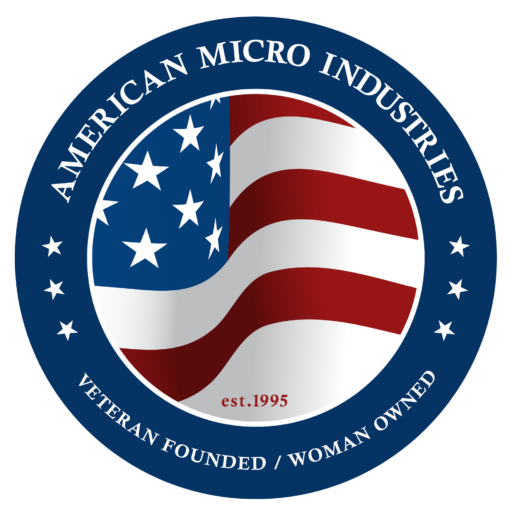

Steel rule die cutting is an effective way of mass producing die cut components with a minimal amount of expense. It is one of the main fabrication methods available at American Micro Industries. We can work with a range of different materials — including plastics, rubber, films and more — to meet your technical requirements and quickly turn around completed projects with a high level of accuracy.
The steel rule die cutting process is similar to using a cookie cutter on cookie dough. A custom steel tool punches a material of choice into the requested shape. There are three components involved in a steel rule die cutting machine — a rubber ejector, a die board and a cutting edge.
The cutting edge is a thin metal blade that gets bent into the correct shape by machine or hand. It’s then placed onto the die board and overlaid with rubber or foam ejector material. The die board is a flat surface made from hard materials like composite, wood or steel, which is cut with a laser or other device. The cut pattern matches the part’s desired shape.
Let’s break down the steel rule die cutting process and how it creates the exact tool requested. Once you’ve requested a die, we begin our process. We’ll work with you to get your exact project requirements and deliver your completed parts.
Here’s how our process works:
There are several die cutting options to choose from depending on your project needs and material, such as:
The main advantages of steel rule die cutting include:
American Micro Industries provides a range of steel rule die cutting services.
We offer low tooling costs and never impose a minimum order requirement on our customers. Whether you’re prototyping a new product or looking to mass-produce custom die cut components, we’ll ensure your project stays within your budget. We can also provide technical consulting to help you choose an appropriate material and process for your project.
We have quality control methods for our die cutting services to ensure the results are consistent with what you and your customers demand. As your contract manufacturer, American Micro Industries offers turnkey solutions and fast turnaround times, allowing your team to start working sooner and get finished products to market quicker.
We’re happy to offer free, no-obligation quotes for any project. Call or email our office to get started today.